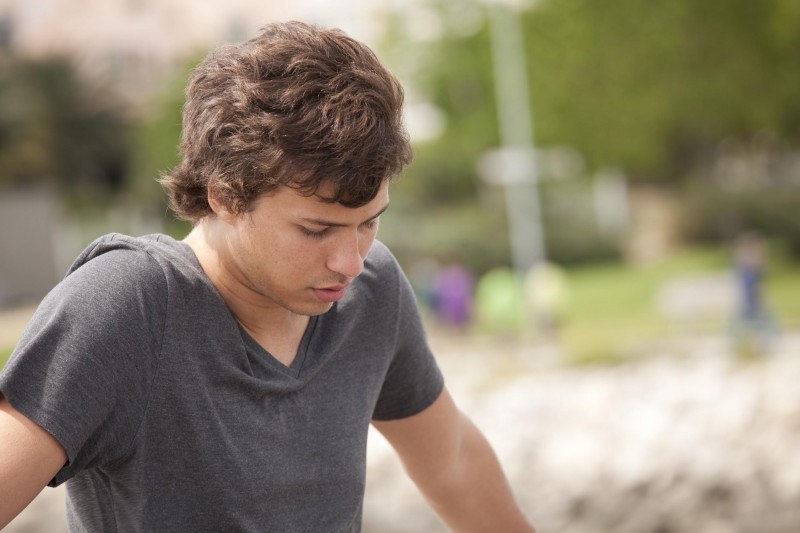The Guide to Safe Pain Management
Addiction Prevention for Cancer Patients

Grappling to cope with your pain during or after cancer treatment is a battle
London - Arab Today
Grappling to cope with your pain during or after cancer treatment is a battle. It’s a precarious balance to find the right regimen that will keep your pain in check without overwhelming your body’s delicate state. The use of opioid painkillers is a particularly controversial topic — while some professionals believe it is the best course of treatment, others worry it puts patients at a risk for dependency and addiction.
This guide provides information that will help you make a more informed decision about whether an opioid prescription is the best route to manage your pain, as well as how to use it effectively. It will explain how opioids work in the body, cover both sides of the debate over using opioids for pain management, and ways to avoid becoming addicted. Everyone’s body responds differently, so it’s important to always consult your doctor before making any final decisions.
The Standard of Treatment or a Slippery Slope: The Debate
Knowing exactly how opioids work and can lead to addiction is an important part of understanding the debate about whether or not they’re a proper course of treatment for you. Opioids act by attaching to special proteins called opioid receptors found in various organs throughout the body, including the brain, spinal cord, and gastrointestinal tract. When attached, the perception of pain is reduced which, of course, is the intent of pain management medication. However, because opioids also affect the reward center of the brain, some people also experience a feeling of euphoria, and this is where things can get tricky.
 Our brains are wired to associate life-sustaining activities (like drinking water and eating) with pleasure — by incorporating these behaviors with a positive feeling (or a reward), we are more likely to repeat them. When opioids are introduced, the brain is not only processing the reduction of pain, but also the unfamiliar euphoric feeling; it could even be interpreted as double the reward. In some people, this can cause the drug to trick the brain into thinking that this is a necessary feeling — even as necessary as food or water.
Our brains are wired to associate life-sustaining activities (like drinking water and eating) with pleasure — by incorporating these behaviors with a positive feeling (or a reward), we are more likely to repeat them. When opioids are introduced, the brain is not only processing the reduction of pain, but also the unfamiliar euphoric feeling; it could even be interpreted as double the reward. In some people, this can cause the drug to trick the brain into thinking that this is a necessary feeling — even as necessary as food or water.
This excessive stimulation can be overwhelming, so the brain attempts to adapt by withdrawing the number of opioid receptors in the brain; simply put, it’s trying to compensate for the staggering back-and-forth of extreme highs (while on the drug) and extreme lows (while not on it), so it reduces the opportunity for attachment. This can lead to drug tolerance, where the same dosage no longer produces the desired effect and more of the opioid is needed to reach that level. This can cause the person using it to feel depressed, lifeless, and incapable of enjoying activities that once brought pleasure. It can make someone feel constantly driven to take the opioid, sometimes more than medically prescribed in either amount or frequency, because not only do they crave the euphoric feeling the drug once gave them, their brain is telling them that they truly need the drug.
 In addition to your brain insisting you need opioids, your body may become physically dependent on the drug. It may become difficult to even function without taking the opioid, and attempts to cut back or stop are often met with painful withdrawal symptoms that may include muscle aches, anxiety, restlessness, excessive sweating, and insomnia. It’s important to note that dependency and addiction are not the same thing. Physical dependency occurs as a result of chronic exposure to a drug. Though it can often lead to addiction, there are some who are completely able to overcome the desire to compulsively seek and use the drug in question and even those who don’t feel the compulsion at all.
In addition to your brain insisting you need opioids, your body may become physically dependent on the drug. It may become difficult to even function without taking the opioid, and attempts to cut back or stop are often met with painful withdrawal symptoms that may include muscle aches, anxiety, restlessness, excessive sweating, and insomnia. It’s important to note that dependency and addiction are not the same thing. Physical dependency occurs as a result of chronic exposure to a drug. Though it can often lead to addiction, there are some who are completely able to overcome the desire to compulsively seek and use the drug in question and even those who don’t feel the compulsion at all.
Therein lies the debate: are only a select group — those with addictive personalities and history — susceptible to the risk of addiction, or are opioids so powerful that they can leave anyone vulnerable and thus need stricter regulation?
It should be noted that the cancer community is often made an exception in the call for cutting back on prescription opioid usage. Though many still see a significant risk for addiction, there isn’t much available information on this community specifically. The research on opioid addiction rate within the chronic pain community in general is varied and ultimately the numbers are unclear.
There are those who argue that the use of opioid painkillers is becoming overly-stigmatized in the cancer community. The notion in this group is that although patients become physically dependent after taking them for more than a few days or weeks, this considered part of proper pain treatment. So long as the patient takes the medication as prescribed and doesn’t deviate from doctor instruction, the risk for addiction is extremely low. Thus, it is unfair to consider making changes to the accepted standard of incorporating opiates into care. Further, the stigma creates a barrier for patients to be honest about their pain levels — for fear of becoming addicted (which this side argues is unwarranted) or fear of judgment or suspicion that they intend to use the medication irresponsibly. Even those who face a true need for increased dosages may worry that coming to their doctor with concern will raise red flags, and the medication that has been helping will be taken away completely.
 On the other side, there is the worry that opioids present a very fine and unpredictable line between the amount needed to feel pain relief and the amount that can cause an overdose. Depending on the amount you’re prescribed, opioids sometimes cause respiratory depression. This creates a danger with drug tolerance and the need to increase your dosage — although the pain-relieving effects may be wearing off, the risk for respiratory reduction remains. Put simply: your pain level adapts to your original dosage, requiring an increase in medication to manage your discomfort. However, your body didn’t become tolerant to the risk for slowed respiration — that risk has already been elevated with the original dose. So although taking more of the opioid may reduce your pain, it dramatically increases your risk for respiratory depression. This is especially true of methadone, and according to the National Safety Council, overdoses with this drug often occur when someone takes it for the first time or when a dosage is increased. That means that even under a doctor’s guidance, increasing your dosage can be risky, let alone if you fall victim to an addiction problem and begin to abuse the drug.
On the other side, there is the worry that opioids present a very fine and unpredictable line between the amount needed to feel pain relief and the amount that can cause an overdose. Depending on the amount you’re prescribed, opioids sometimes cause respiratory depression. This creates a danger with drug tolerance and the need to increase your dosage — although the pain-relieving effects may be wearing off, the risk for respiratory reduction remains. Put simply: your pain level adapts to your original dosage, requiring an increase in medication to manage your discomfort. However, your body didn’t become tolerant to the risk for slowed respiration — that risk has already been elevated with the original dose. So although taking more of the opioid may reduce your pain, it dramatically increases your risk for respiratory depression. This is especially true of methadone, and according to the National Safety Council, overdoses with this drug often occur when someone takes it for the first time or when a dosage is increased. That means that even under a doctor’s guidance, increasing your dosage can be risky, let alone if you fall victim to an addiction problem and begin to abuse the drug.
Preventing Addiction and Safe Opioid Use
First, ensure that the conversation with your doctor about your treatment plan is always two-way. Don’t be pressured into anything you aren’t comfortable with and never feel hesitant to ask questions — it’s important for you to be informed on your options and your doctor wouldn’t want you to try a regimen you weren’t comfortable with. The decision should be made together.
Further, be completely honest with your doctor. He may ask questions about your personal history with drugs and alcohol, in addition to family history. Remember, there seems to be a strong link between genetics and addiction, so even if you’ve never had a problem, it’s important to note if someone in your family has struggled. Your doctor won’t make a hasty decision based on one aspect, nor will he pass judgment if you do have a history with drug abuse. The only way to find a safe course of treatment is to be open and honest, so answer the questions you know and attempt to get answers to the ones you don’t.
If you both decide that a prescription opiate is the best route to manage your pain, get the details about exactly which drug you’ll be taking, the dosage, possible side effects, and how long you’ll be taking it. If you’re concerned about dependency or addiction, discuss starting with a smaller dosage and increasing as necessary. Your doctor will likely follow up with you regularly to ensure that the drug is working as it should, you aren’t experiencing negative side effects, and you aren’t showing signs of addiction. Again, keep in mind that his intention isn’t to pass judgment if you do seem to be developing a bad habit — opioid abuse is dangerous, so his priority is your health and safety.
Always take your medication as directed by your physician and never alter the dosage without consulting him. Never crush or break your pills as this can change the absorption rate and lead to an accidental overdose. Don’t mix it with other medications without your doctor’s knowledge; even antihistamines can combine negatively with the opioid’s respiratory effects, so don’t risk it even with a basic over-the-counter medication. And of course, never mix your medication with alcohol or illegal drugs.
Pay attention to how you’re feeling while taking the medication as time goes on, even keeping a journal to write everything down. Warning signs of dangerous dependency include:
Keep your doctor informed on everything you’re experiencing and be honest if you worry you may be developing a problem. Don’t wait until your next checkup to talk to him; the moment you think something’s off, give him a call or set up an appointment.
There are also alternative therapies to consider, either as a part of your pain management regimen or as a substitute for opioids. Depending on your specific needs, some options may be physical therapy, massage, exercise, and non-opioid painkillers. Again, never combine other medications with your treatment plan without first consulting your physician.
The road to recovery from cancer comes with its own unique challenges, and sometimes its own unique physical pain. Whether you decide on an opiate painkiller, an alternative therapy, or a combination of several courses of treatment, it’s important that you work with your doctor to find the option that’s right for you. No matter which treatment plan you choose, the ultimate goal is to find the best way to get back on your feet and face each day with confidence.
Source: Drugrehab
GMT 22:42 2018 Thursday ,13 December
'World of Food Abu Dhabi' kicks off at Umm Al Emarat ParkGMT 14:21 2018 Monday ,26 November
'Pandora's Box': Chinese scientists condemn human gene-editing claimGMT 10:45 2018 Thursday ,15 November
Major genes-focused testing for Aussies points to better treatment of rare cancersGMT 13:08 2018 Wednesday ,31 October
Syria participates in Global Parliamentary Summit against Hunger and MalnutritionGMT 12:57 2018 Wednesday ,24 October
Viral outbreak kills six children and left 12 more sick at New Jersey rehab centreGMT 15:42 2018 Saturday ,20 October
Marathon in Damascus to raise awareness about breast cancer early detectionGMT 12:44 2018 Wednesday ,17 October
Russia must be in the know on foreign labs dealing with biomaterials "health official"GMT 18:30 2018 Monday ,15 October
President Al-Bashir Affirms Sudan Commitment to Realize Universal Health Coverage
Economic conference on investment opportunities in Syria kicks off
Bucharest - SANA
With the participation of 120 representatives of Romanian companies, Chambers of Commerce and industry, An economic conference on “Reconstruction in Syria between the development of economic steadfastness and the opportunities ofRussia tests new telemetry system during manned Soyuz MS-11 spacecraft’s launch
Moscow - TASS
The Astra-06 apparatus developed by specialists of Russian Space Systems (RSS) was used for the first time as additional telemetric equipment aboard the manned Soyuz MS-11 spacecraft launched from the Baikonur CosmodromeLiverpool, Manchester City seek neighbours' help in title chase
London - DPA
Liverpool and Manchester City will be looking for a little help from their not-so-friendly neighbours this weekend. The Premier League front-runners face each other's local rivals when City host Everton and Liverpool take on Manchester United. Liverpool jumped above City at theBlue light in smartphones linked to blindness and some cancers
Spain - DPA
Ever since we have started to become chained to our smartphones and tablets, people have been saying that the waves coming off these devices must be bad for us. So often laughed off as conspiracy theorists, it now looks more and moreFestive Fashion by Dubai-based designer ASMARAÏA
Dubai - Arab Today
Dubai-based label ASMARAÏA just launched its pre-fall 2019 collection — and it’s all about cruelty-free, sustainable fashion with a festive edge. Checkmate The 15-piece collection features this checkered skirt-and-jacket ensemble that is giving us major “Clueless” vibes. Gold Rush ‘Tis the season to sparkle and this dazzling, floor-length gold skirt will do the trick. Take note of the chic black bow detail at the waist — it’s the ultimate party look. Feathered fashion The brand works with environmentally-friendly materials such as organic cotton, recycled polyester and faux fur, so you can be sure this feathered look doesn’t come at the cost of an animal’s life. Jewel Tones If you want to glisten like a polished jewel at your next festive function, this emerald-colored skirt is the perfect choice with its sequin details and shimmery overlay. Golden Girl Leopard printMaintained and developed by Arabs Today Group SAL.
All rights reserved to Arab Today Media Group 2025 ©
Maintained and developed by Arabs Today Group SAL.
All rights reserved to Arab Today Media Group 2025 ©


















Send your comments
Your comment as a visitor